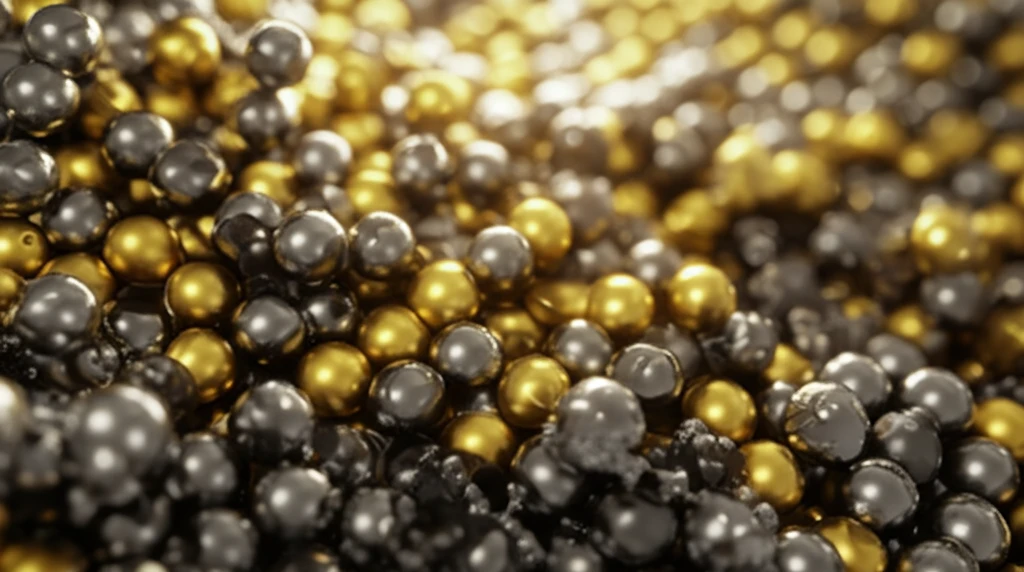
Unlock Stronger Materials: The Surprising Science of Iron and Nickel in Hardmetals
"Could iron replace nickel in the creation of super-strong hardmetals? A new study reveals the potential for stronger, more cost-effective materials."
In industries ranging from oil drilling to advanced manufacturing, the demand for exceptionally durable materials is constant. These materials, often referred to as hardmetals, are critical for tools and components that must withstand extreme conditions. Traditionally, hardmetals have relied on a combination of tungsten carbide and metals like nickel and cobalt to achieve their toughness. However, researchers are constantly seeking ways to improve performance and reduce costs.
A recent study published in the 'International Journal of Refractory Metals and Hard Materials' has explored the potential of using iron as a substitute for nickel in hardmetals. This research delves into how iron influences the structure and mechanical properties of tungsten carbide composites, opening doors to new material designs with enhanced capabilities.
This article breaks down the key findings of the study. It explains the implications for industries looking for stronger, more cost-effective materials. We'll explore the innovative techniques used and the potential benefits of incorporating iron into the hardmetal mix.
The Iron-Nickel Dynamic: A Microscopic Look

The study focuses on spontaneous infiltration, a process where molten metal is drawn into a powder compact, creating a dense, solid material. Researchers compared hardmetals produced using nickel and iron infiltration methods. They examined the resulting microstructures using advanced techniques like scanning electron microscopy (SEM) and energy dispersive spectrometry (EDS). These methods revealed how nickel and iron interact with tungsten carbide at a microscopic level.
- Enhanced Hardness: The presence of these iron-nickel compounds significantly increases the hardness of the material.
- Improved Elastic Modulus: The diffusion of iron into the matrix leads to the formation of tiny precipitates of α-Fe and Ni3Sn, boosting the material's stiffness.
- Cost-Effectiveness: Iron is more abundant and cheaper than nickel, potentially lowering the cost of hardmetal production.
- Performance: The increased elastic modulus of the material driving to an increase of about 30% in its elastic modulus, and without appreciable effect in the hardness observed..
The Future of Hardmetals: A Shift Towards Iron?
This research provides a compelling case for further exploration of iron-based hardmetals. While challenges remain, the potential benefits are substantial. By optimizing the composition and processing techniques, engineers could unlock a new generation of high-performance, cost-effective materials for a wide range of industrial applications. As industries continue to push the boundaries of material performance, iron-based hardmetals offer a promising path forward.
